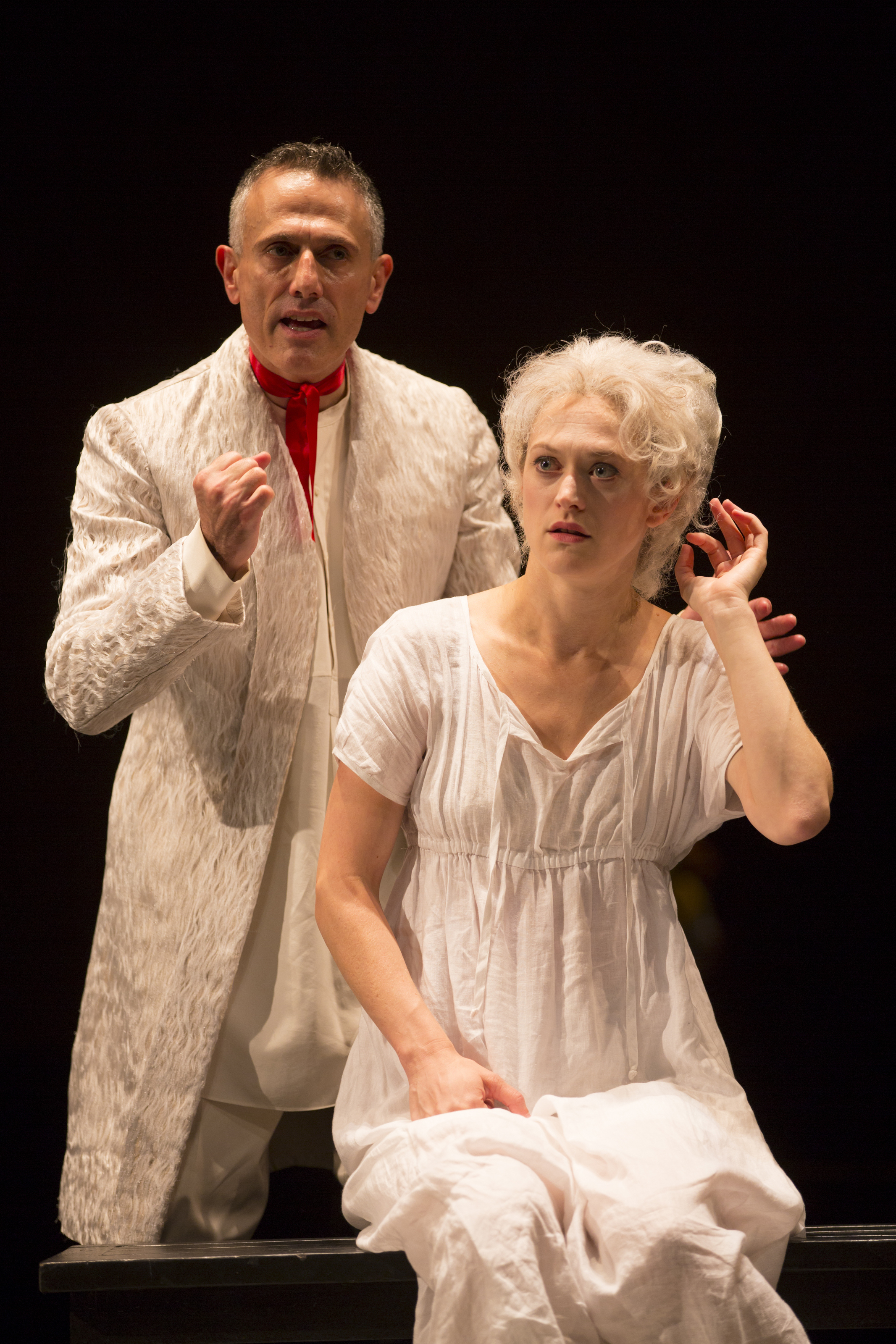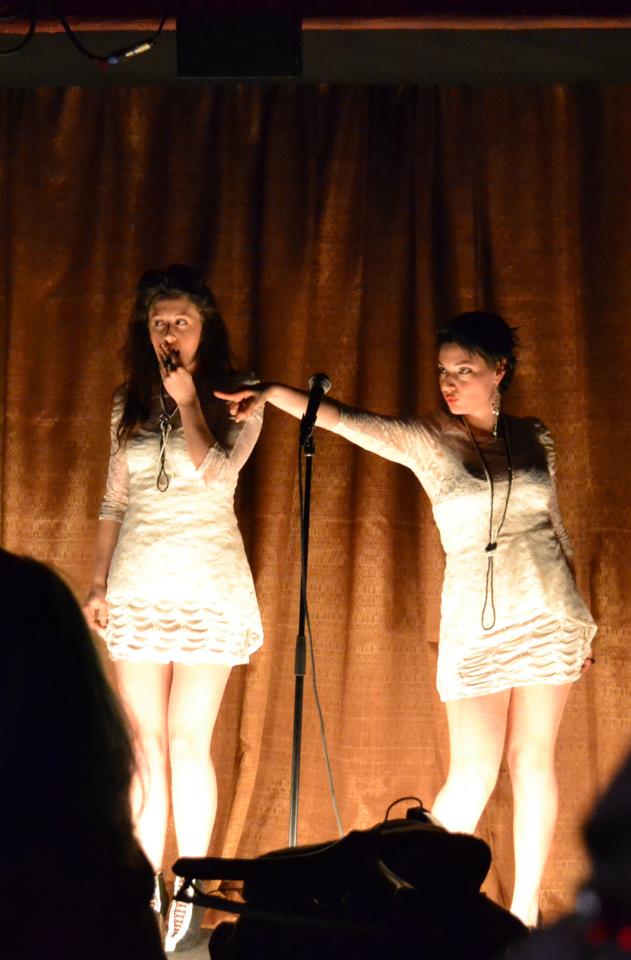Last month Playbill ran an article on theater groups raising money for their projects through Kickstarter. One example was Old Sound Room, a troupe comprised of current and former Yale School of Drama students. In June, the group’s inaugural production, Old Sound Room Lear, played for 9 performances in Harlem. The show presented an interesting mix of Shakespeare's King Lear—significantly condensed in running time, shorn of many characters and combining others—and contemporary theater touches, such as movement, musical interludes, and the voices of interviewees at the Lilian Booth Home for retired actors. OSR Lear placed front and center the story of Lear as a tale of aging, of the aged coming to terms with their changed status—loss of youth—and with the freshness of the next generation, compelled by ideas of its own. If that doesn’t quite sound like the play you remember, that’s the point. Old Sound Room side-stepped the tragic aspects of the play in an effort to find something more upbeat.
YSD students gain great training in how to speak Shakespeare, so that element of the show was strong—King Lear being one of the greatest plays ever written, of course—and they also undergo immense challenges of compression in what are called “Shakespeare Quartets” where an extremely scaled-down cast of four or five tackles one of the Bard’s plays in intensive workshop productions. Such skills served OSR in good stead in their version of Lear.
Special mention should be made of Brian Wiles as Lear—head shaved for the occasion like a sort of sinister Daddy Warbucks; his rages were in-keeping with a Lear not mad so much as vain with an old man’s self-regard that added pathos to the performance. The scene on the heath in the storm was particularly memorable with Wiles bound by several ropes he tugged this way and that, making scary lunges at the nearby audience. As the evil sisters, Goneril and Regen, Elia Monte-Brown and Adina Verson, respectively, managed to find some good in the girls, as daughters beset by an unruly and uncooperative elder who has “ever but slenderly known himself.” It was easy to picture the offspring of aged Baby Boomers joining forces against the spoiled brats their parents have become, with Sophie von Haselberg's Fool a kind of doting stepchild.
Fisher Neal, as Kent, engaged Lear from time to time with lively argument, and Laura Gragtmans gave an affecting aura to Cordelia who combined with the role of Edgar—Gloucester’s good son—and ended alive by her father’s side. Here, with no Gloucester in the cast, Lear endured the blinding that befalls the latter, ending his days in peace with his faithful daughter, à la Oedipus, blinded and beggared at Colonus. The condensation of the play created a more recuperative evening, but it made of Edmund (Dan O’Brien) a more toothless villain such as is found in Shakespeare’s comedies. O’Brien did a nice turn as the discontented upstart, unmatched, here, with any good brother to "gall his kibe."
In some ways, the effect was a bit like watching half the play, but OSR found a way to extend their chosen theme by enacting the interviewees from the Booth retirement home. This turned out to be one of my favorite features, as the cast was uniformly entertaining in their staging of aged actors and actresses commenting on Lear and recounting what the process of maturing has meant for them. The movement segments were less clearly apropos, though they made for some swift transitions, while other touches—such as Gragtmans’ very eerie rendition of “There Was an Old Woman Who Swallowed a Fly”—added striking interludes.
So, what’s next for the group? According to Adina Verson, she and OSR Lear’s director, Michael McQuilken, have put together a show called Machine Makes Man which they are preparing to launch in the Amsterdam Fringe Festival under the umbrella of OSR. The Festival is smaller than some—such as New York’s—and is more selective, with the participants put up for the duration of their 6 performances. The show received input from the other OSR members, and there is talk of trying to get the piece installed within an alliance of 9 to 10 different Fringe Festivals in Europe and South Africa, which would give the group a base on a touring circuit. There’s hope too that MMM will find its way to New York, perhaps as early as the fall.
Machine Makes Man is based on the idea of “the singularity” as espoused in the writings of Ray Kurzweil, wherein technological advances overtake the human species’ ability to process them. In other words, living in the future will require “enhanced humans” who have developed beyond “an outdated homo sapien,” to use Ray Davies’ line. In the not-too-distant future, a married couple face the ramifications of enhancing themselves. Specifically, the husband has opted to become “a cloud of energy” and the wife pays a visit to the company responsible for the technology to complain, which sets off a flashback about how the couple got to that point.
Kurzweil, now the head of engineering at Google, has been a major player in the development of technologies with strong human interface, such as translating between languages and the text-to-speech synthesizer, and argues for mankind's improvement through technology. Taking its cue from how transgender characters are portrayed in our culture, Machine Makes Man aims to dramatize the condition of the “transhuman”—an idea Kurzweil sees as key to the future.
And what of the future of OSR? The group has been learning the ropes of being an up-and-coming DIY theater group—which means writing grants and applying for non-profit status—and, because the group’s first show followed hard upon the group’s founding, OSR has still to hash-out what kind of company they want to be. Clearly, the main design is for collaborative theater, though it may be that various theatrical outings may join beneath the OSR banner so long as some of the members are at its core. There are further plans to workshop Lear, though it can’t be done for the same kind of venue due to the “showcase code”—which means that something more in-depth and definite is likely to emerge by and by that is very like Lear and yet not.
For now, the 12 members of OSR have dispersed their divers ways—some returning as students to YSD productions in the fall—to meet again anon.




